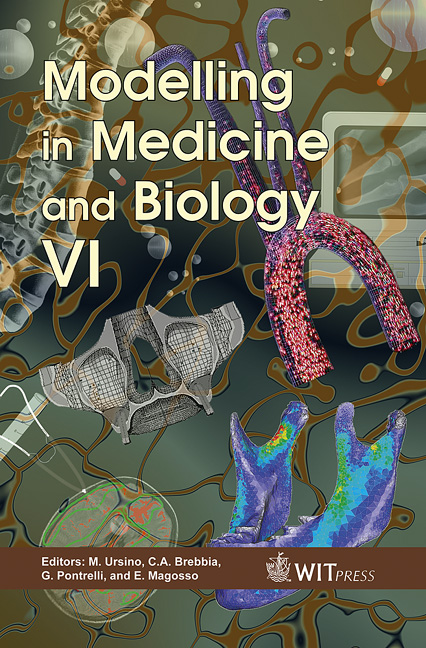Effects Of β-adrenergic Stimulation On The Ventricular Action Potential: A Simulation Study
Price
Free (open access)
Transaction
Volume
8
Pages
8
Published
2005
Size
374 kb
Paper DOI
10.2495/BIO050091
Copyright
WIT Press
Author(s)
E. Grandi, S. Vecchietti, S. Severi, E. Giordano & S. Cavalcanti
Abstract
Cathecholamines increase heart rate and contraction force. This effect is mainly mediated by their interaction with the β-adrenergic receptor (β-AR) and its downstream ability to modulate Ca2+ cycling and fluxes of a number of ions through specific channels across the cell membrane. The complex nature and broad cellular influence of the β-AR signaling cascade suggests that an integrative modelling approach is appropriate to size the relative weight of each of the single mechanisms by which β-adrenergic inputs modulate whole-cell action potential (AP) and Ca2+ handling in cardiac myocytes. The ventricular AP was simulated by using the Luo-Rudy model. The transmural heterogeneity of the AP (epicardial, mid-myocardial and endocardial cells) was reproduced by considering three different levels of expression of the transient outward current (ITo) and three different ratios of the slow vs. the rapid component of the delayed rectifier K+ current (IKs / IKr). The β-AR stimulation was modelled by incorporating its effects on L-type Ca2+ current, phospholamban, IKr, IKs, Na+-K+ pump and Na+/Ca2+ exchanger. Simulation of β-AR stimulation showed significant changes in the AP and in Ca2+ handling, depending on the cell type and on the levels of ion fluxes alterations due to β-adrenergic inputs. Notably, the occurrence of early- and delayed-after-depolarizations (EADs and DADs respectively) was also reproduced. In the present analysis, EADs and DADs are suggested as mechanisms responsible for the arrhythmogenic effect of the adrenergic stimulation. Keywords: β-adrenergic stimulation, computer modelling, arrhythmia.
Keywords
β-adrenergic stimulation, computer modelling, arrhythmia.





